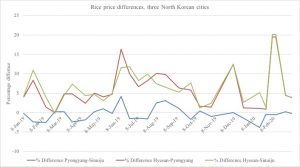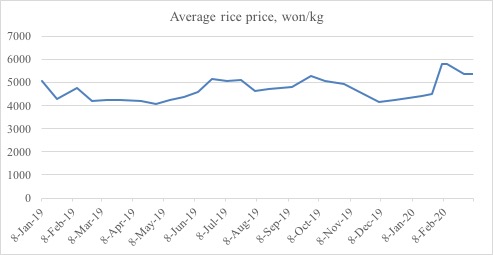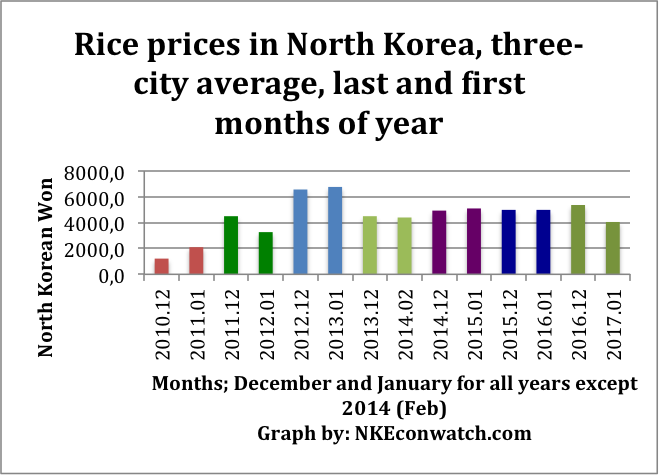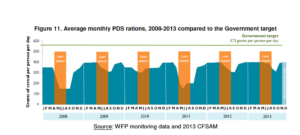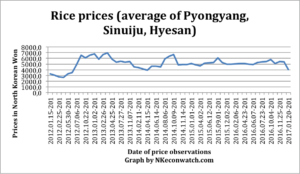By: Benjamin Katzeff Silberstein
On Monday (July 20th), Kim Jong Un visited the construction site for the Pyongyang General Hospital and unleashed some rather scathing criticism against the management of the project. An excerpt from KCNA:
Noting that it is making a serious digression from the Party’s policy in supplying equipment and materials to go against the intention of the Party which initiated the construction for the people and mapped out its operation, he severely rebuked it for burdening the people by encouraging all kinds of “assistance”.
Saying that the construction coordination commission failed to solve all the problems in conformity with the Party’s policy line, he said in the strong terms that if such situation is left to go on, the noble plan and intention of the Party which initiated the glorious and worthwhile construction for the good of the people could be distorted and the image of the Party be tarnished.
He instructed the relevant departments of the Party Central Committee to investigate the performance of the construction coordination commission as a whole and replace all the officials responsible and make strict referral of them.
Pointing out that though the construction work of the hospital was being pushed ahead thanks to the patriotic zeal and devoted efforts of the builders […].
(Source: “Supreme Leader Kim Jong Un Gives Field Guidance to Pyongyang General Hospital under Construction,” Korean Central News Agency, July 20th, 2020.)
The Pyongyang General Hospital project was destined for hurdles from the very beginning, as this article explores. Kim has personally emphasized how central it is to finish hospital construction by the deadline of October 10th this year, when the Korean Worker’s Party will celebrate its 75th anniversary.
With such time pressure for construction, worksite conditions were always going to be problematic. The politically motivated deadline, moreover, increases the risk of shoddy construction work. Rather than serve the general public at large, the hospital, whenever finished, is likelier to cater to the sociopolitical elite who can pay their way and, perhaps, to medical tourism.
Kim’s criticism against construction officials, however, is about much more than the hospital construction project itself. It relates to the very structure of the North Korean system, and of communist economies in general. This sort of criticism really is a standard performance in a decades-old genre, where the supreme leader shows himself to be on the side of the people by pinning the blame for any problems and suffering among the population on lower-ranking officials.
Kim’s public criticism of the construction management officials is, in other words, not exceptional, but a standard mechanism and a feature of North Korea’s economic system. Much in North Korean governance may be subject to dynamic change, but the one constant is that the leader can hardly ever be at fault.* To hold this constant, someone else must be blamed when economic plans don’t go the way they should. Never mind that the leader often rules by directives that are often vague and given in off-the-cuff-statements, left to subordinates to interpret and implement as best as they can. Problems like this are almost inevitable in an economy like North Korea’s, still in structure very much a command economy despite significant relaxations over the past few decades.
Thus, when the Soviet Union’s industrialization plan didn’t proceed as intended, it had to be the fault of wreckers working for foreign powers. Stalin himself could never be at fault. In the same way, it cannot, by definition, be Kim’s fault that people are overburdened with requests for “assistance” to help build the hospital. Lower-level bureaucrats have to be the ones to blame, for overburdening the people, because the leader can never be associated with direct pain and suffering in people’s daily lives.
In fact, such “assistance” – often termed “voluntary” – is a mainstay of the North Korean economic system and pretty much has been ever since the beginning. Kim surely cannot have missed the pictures and news reports in his own state media about “active support” from “the people”, and different localities sending construction materials. This sort of “voluntary labor” to gather materials for state projects or work on construction sites is of course not voluntary at all, as staying away would be punishable.
It is a facet of everyday life in North Korea that doesn’t get nearly the attention it deserves, as it often takes up a substantial number of hours. It is also not a new phenomena. The North Korean state has always demanded such “voluntary” contributions from the people to make up for materials and labor that the state cannot produce. Naturally, officials will use whatever means required to make their deliveries, even if these means are forcible. This applies to financial assets as well. The wealthier the trading middle class grows, the more the state will subject them to loyalty payments and the like.
In North Korea’s current situation, what choice does Kim really have but to blame lower officials for failures, and admonish them to do better? The Pyongyang General Hospital is not the only grandiose, heavily publicized project that is doing poorly. The Wonsan-Kalma resort has also been plagued by shortages and delays. The government needs these projects not least for propaganda value, to show to the country that although difficulties abound, all is not hopeless, the economy is still making progress, and people’s living standards will improve. So when none of the projects carrying this message are working out, the government has a problem.
In normal times, the state could have dismantled more economic regulations to make it easier for people to conduct trade and private economic activity. Indeed, though it is difficult to quantify, the state giving room for market mechanisms has been the most important factor for the significant improvements in the North Korean economy over the past few years.
Right now, this is difficult to do, because the state needs to extract more resources, not fewer. Over the past few years, the state has grown increasingly short of foreign currency and other assets, first because of sanctions, and later because of the Covid-19 border shutdown (which has partially ended). As a result, we’ve seen the state cracking down more and more on private business and market actors, to bring in resources as other avenues dry up.
The more difficult things get for the North Korean economy, the more demands increase for “loyalty payments” from private citizens, to fund the mega-projects that Kim has staked so much credibility on. We can expect to see more officials lose their jobs in the future in the same manner as those who got axed after Kim’s hospital construction field guidance.
*Such self-criticism does of course happen, but its rarity is attested to by the fact that it (rightfully) makes news headlines. One recent example is Kim Jong Un’s 2017 New Year’s Address.

